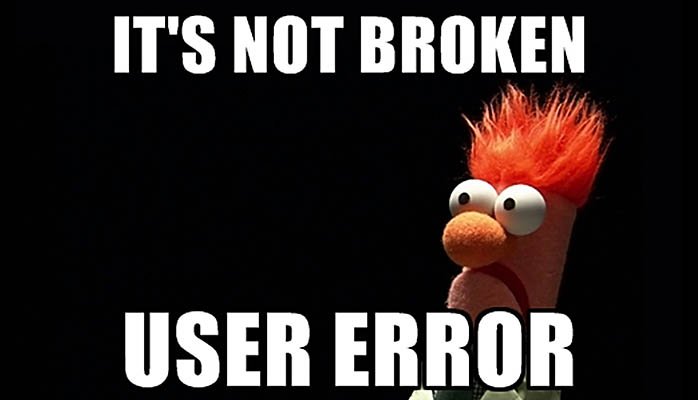Any explanation of computer networking generally begins with the Open Systems Interconnection (OSI) model. This reference model assists with the interoperability of communication systems by providing a standard set of protocols that describe the method by which data flows through a system.
Officially, the OSI is described as having seven layers, but anyone who’s actually worked with the Open Systems Interconnection (OSI) model knows that one more later exists. In fact, this additional layer that sits on top of the application layer may be the most important and is known as the user layer and unfortunately, the tools we develop here at Apposite Technologies can’t validate applications at this layer. User error should always be considered throughout your troubleshooting efforts. When encountering a problem that seems inexplicable, always start at the 8th layer.
“Have you tried turning it off and on again?”
Those working within the realm of IT support should be more than familiar with this mantra. Since most cases of user support start with this simple question, that should go to show that if something’s wrong within a system and the issue can’t be obviously identified within the fist 7 layers of the OSI, the problem is probably you. To avoid calling someone an idiot, best practice is to just cite user error.

Indeed, the eighth layer can be very difficult to troubleshoot, so for your convenience, we’ve taken the liberty of compiling this simple guide to some common impairments experienced within the user layer of the OSI.
ID10T Error
This common impairment often occurs when a user has no idea what they’re doing and refuses to take responsibility for any of the resulting issues. An ID10T error may result in a machine being unresponsive and generally demands an immediate fix from support. Generally, the issue can be resolved by informing the user of the difference between the power button and the button which controls the CD drive.
PEBKAC
Problem Exists Between Keyboard And Chair (PEBKAC) is similar to a PICNIC error, which stands for Problem In Chair Not In Computer. A PEBKAC error is the result of faulty layer 8 equipment. It’s not uncommon for a PEBCAK error to result in catastrophic systems failure and should be addressed immediately.
EEOC
Equipment Exceeds Operator Capacity, or EEOC error, is the result of inadequate layer 8 equipment. Examples include layer 8 equipment relying on auto negotiation settings rather than manually matching the speed and duplex settings on both ends or delaying backups until tomorrow because a system seems to be working well enough.

Code 18 Error
A Code 18 error indicates the problem is sitting about 18″ away from the screen. A quick remedy is to move the offending party as far away from the machine as possible.
Avoiding Layer 8 Issues
Unfortunately, the solution to a layer eight issue is not always as easy as to identify as those within the other layers. You can’t always swap out a user in the same way you can change a NIC. The use of Group Policy in Windows network Domains and GConf in Linux networks may also aid in reducing some layer eight issues. Maintaining a clear distinction between user and administrative privileges and blocking certain websites and downloads can help tremendously. Proper vetting during the interview process is the best way to test and validate your layer 8 applications prior to deployment within a live network.
While our equipment can’t help your layer 8 issues, we’ve got the first four layers covered, so be sure to check out our handy line of network emulation tools. Happy testing!












